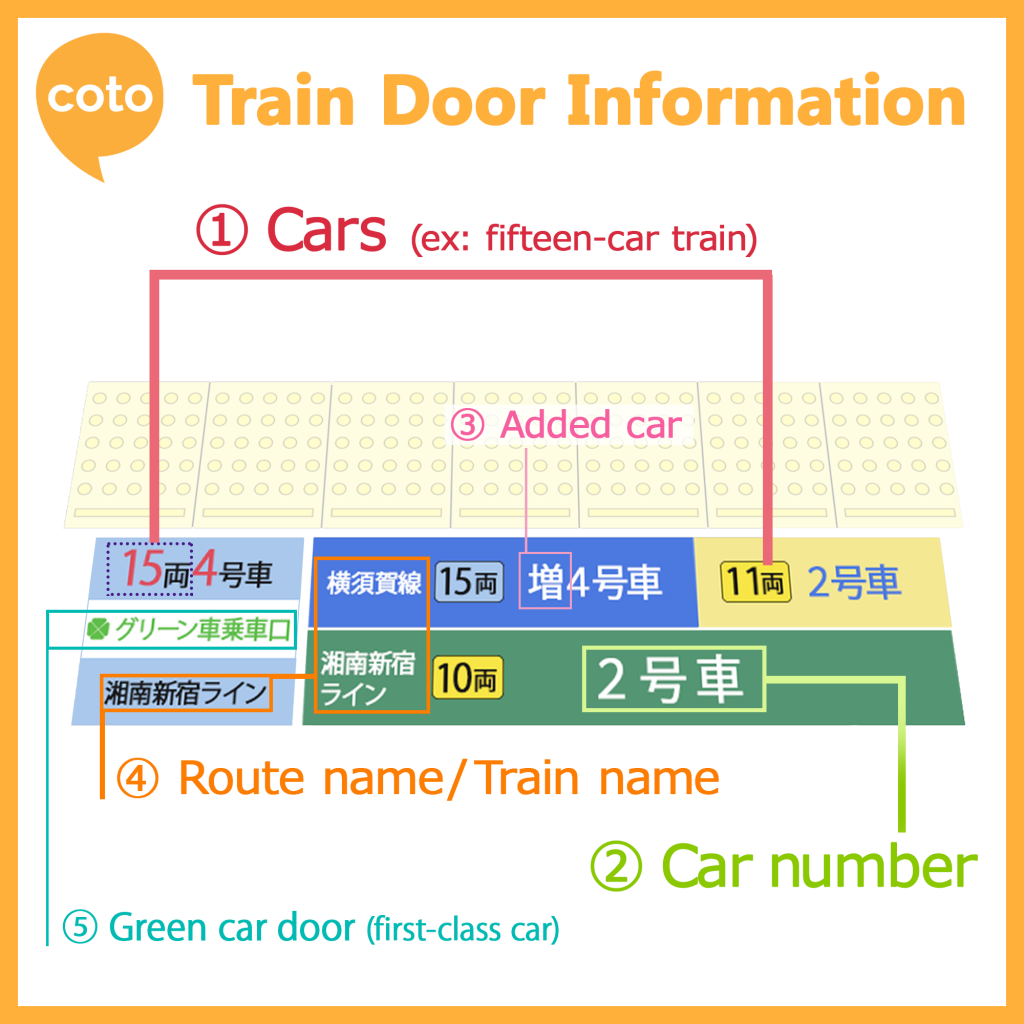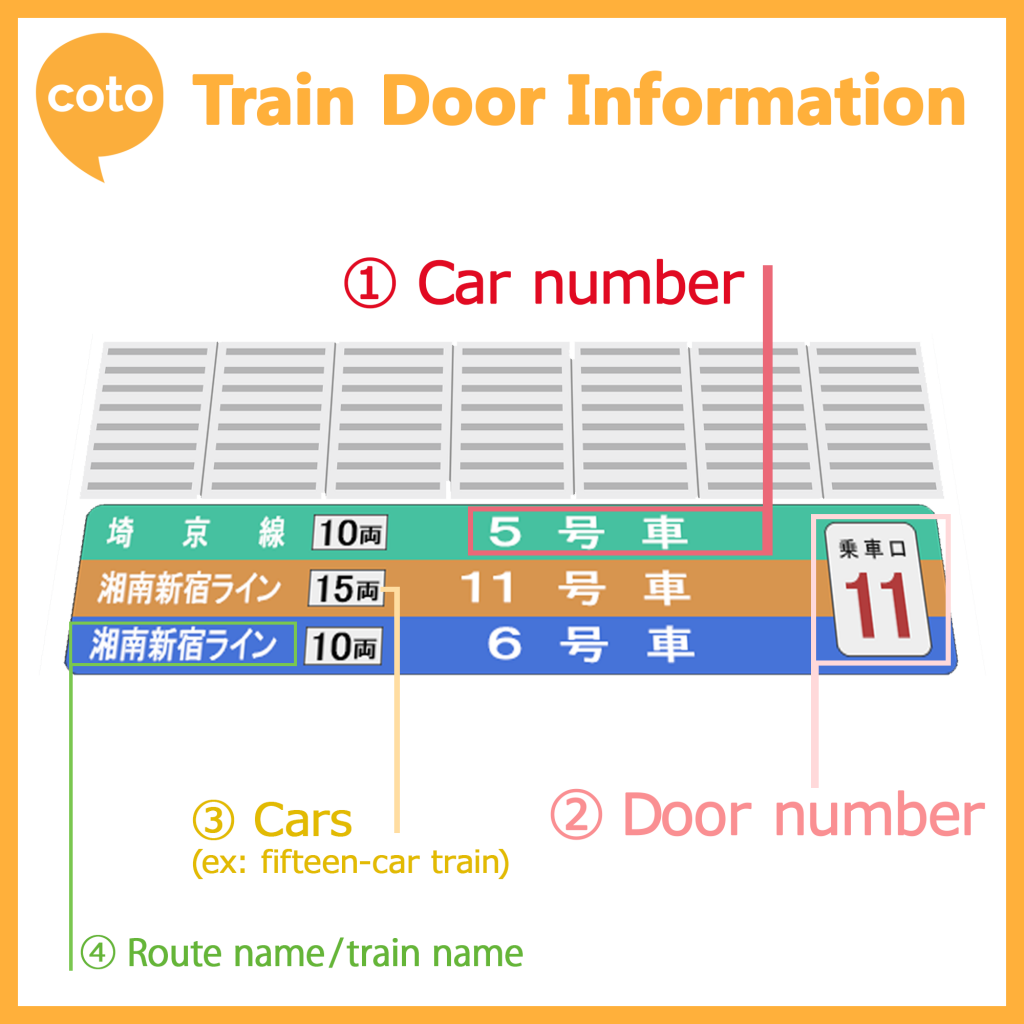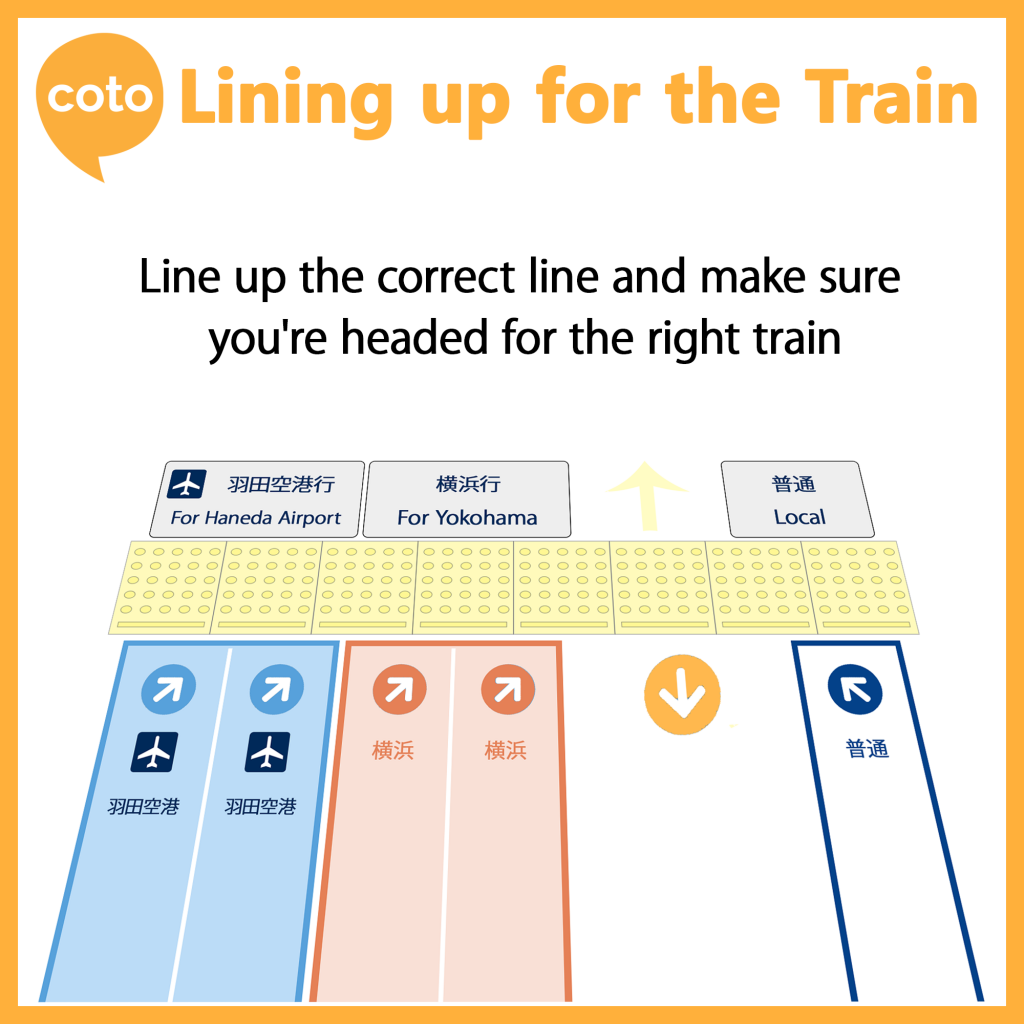
Waiting at a Japanese train platform can be tricky. There are many signs on the floor and it can be overwhelming to try to understand. When traveling in Japan – understanding the difference between where to stand can mean the difference between missing your train or not. So, In this blog – we will show the key vocabulary that you will find while reading signs in a Japanese train station.
With multiple routes using the same platform – things can get quite complicated. Different trains have different lengths – which means that different car numbers will appear in the same space – depending on the type of train that you are taking.

1. 15両(15 Ryō): A train of fifteen cars.
2. 2号車(2 Gōsha): Car No.2.
3. 増4号車 (Zō 4 gōsha): Added/additional car No.4.
4. Route name/ Train name
5. グリーン車( Gurīn-sha)乗車口( jōshaguchi ): First-class car door
In the above example – you can see what a typical train platform may look like – when looking at the floor. The route name will be color coded and depending on the train size – it will show you the car # for each – as well as whether or not it is a green car or first class car.
You may see a section for “added” cars – certain train lines have trains with different lengths. Some trains have 10 cars, and some have 15 cars – but often instead of saying car #14 – they will say – “added car #4”. So be careful that you are standing at the entrance to car #4 and not car #14 – or you may have to run to catch your train!

This information allows you to see what routes stop at the platform – and how many cars each line has – as well as which door opens at the point you are standing.
1. 5号車(Gōsha): Car No.5.
2. 乗車口( jōshaguchi ) 11: Door No.11.
3. 15両(Ryō): A train of fifteen cars.
4. Route name/ Train name
Vocabulary:
整列乗車(Seiretsu jōsha): Lining up for the train.
10 両編成(10-Ryō hensei): A train of ten cars.
編成(hensei): consist of… / be composed of…
ホーム (Hōmu): Platform.
先発(senpatsu): the earliest/ advanced train.
次発(jihatsu): Next / following train.

Sometimes we can see different kind of trains use the same platform. Passengers may be waiting for a local train, limited express. They may also be queued for the train after the next train – which travels to a different destination.
Make sure to check the Train information display and the information shown on the train.
Sometimes you can see the line direction marked on the floor. Follow the instructions, you can line up like a pro!
You can learn more about taking the train in Japan by clicking the links below:





